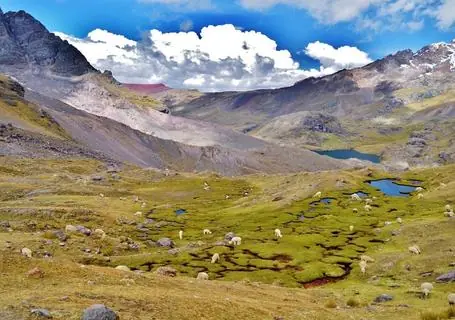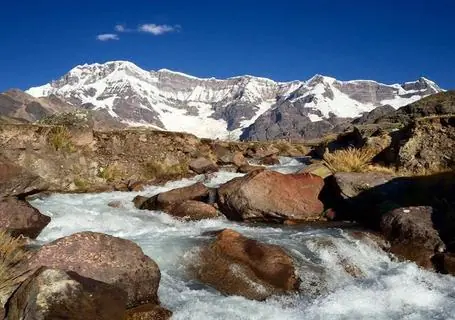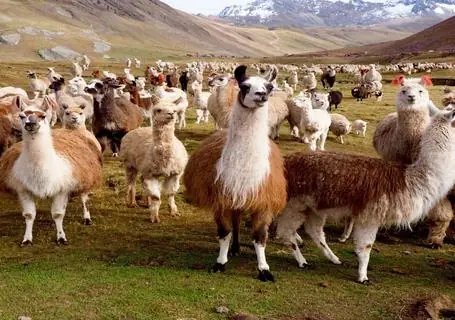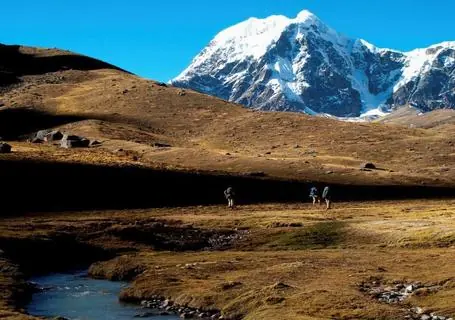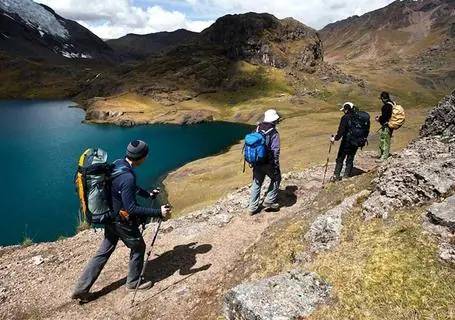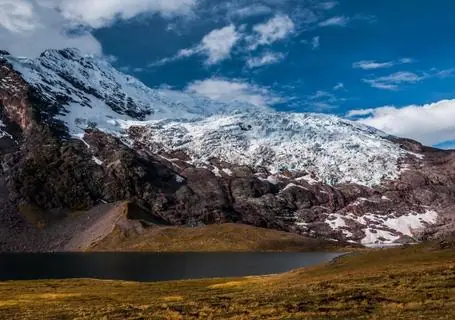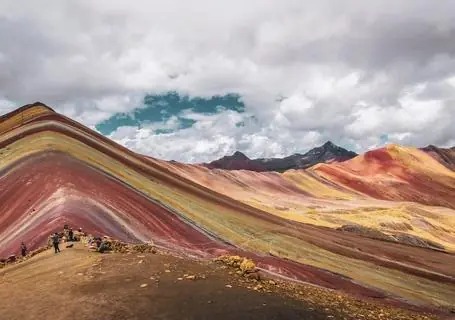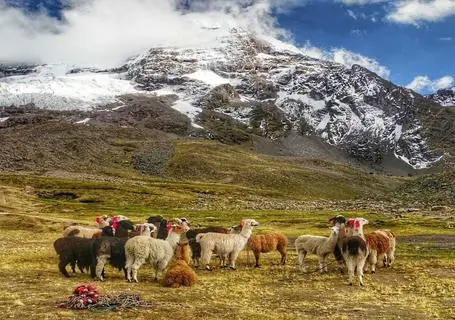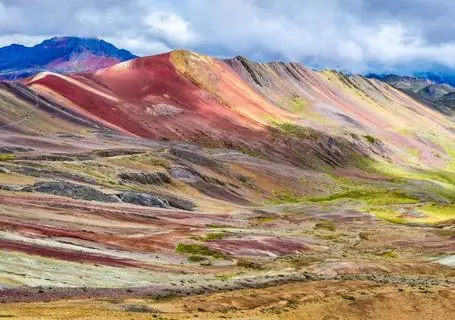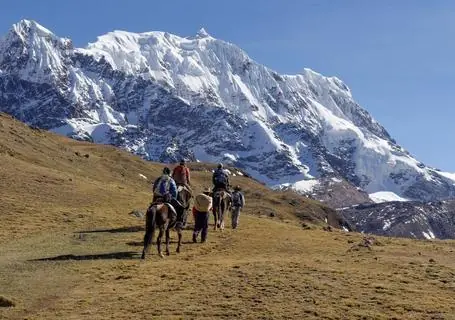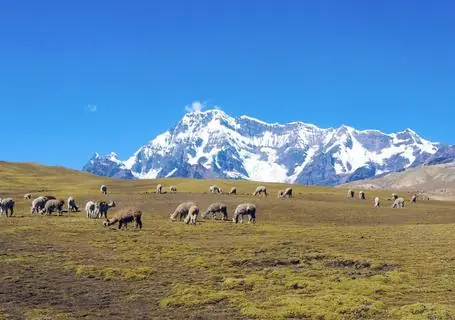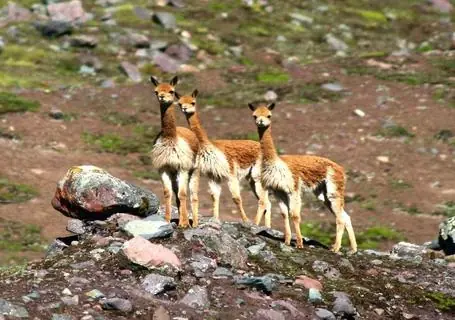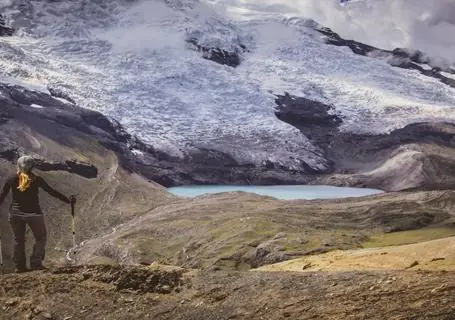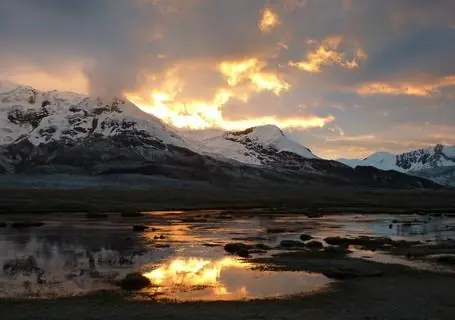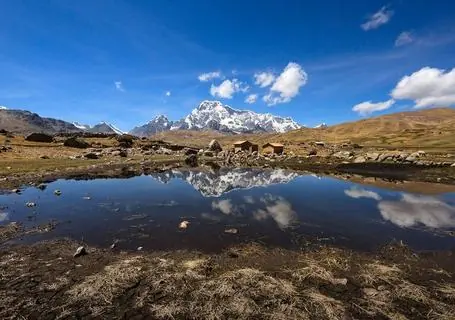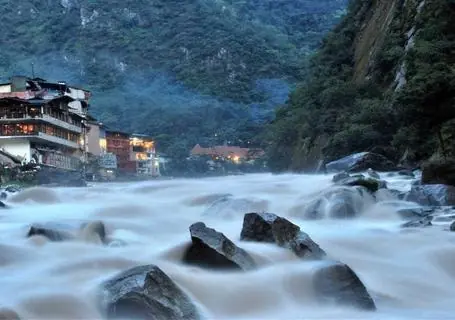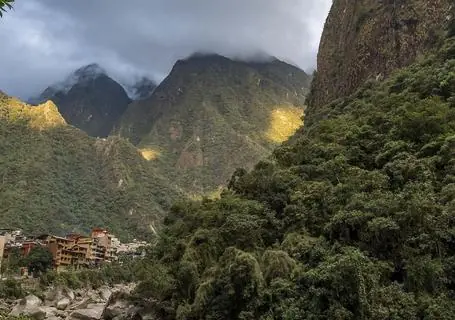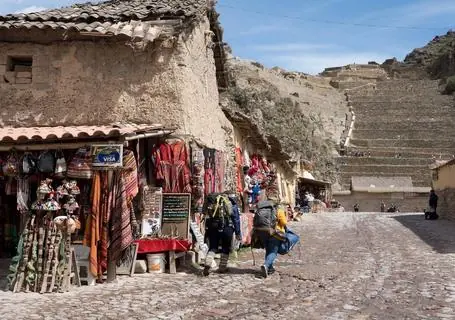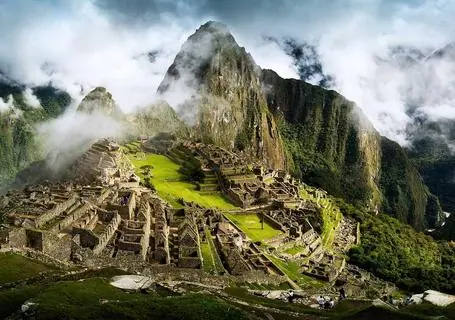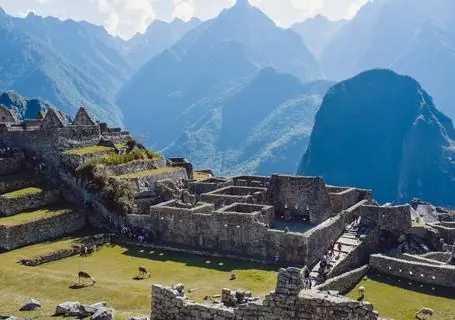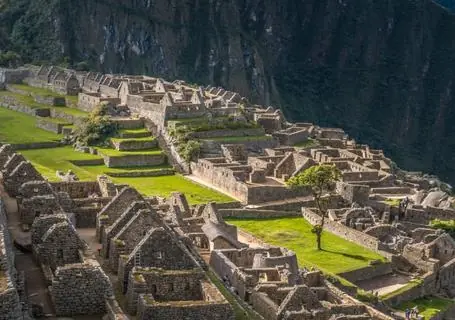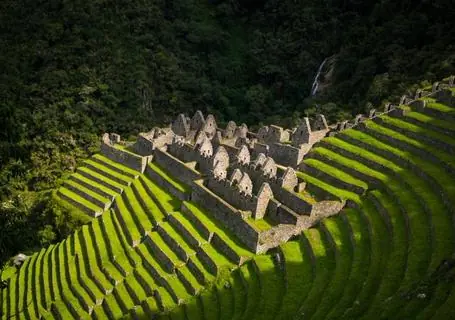Ausangate, Rainbow Mountain to Machu Picchu - 7 Days
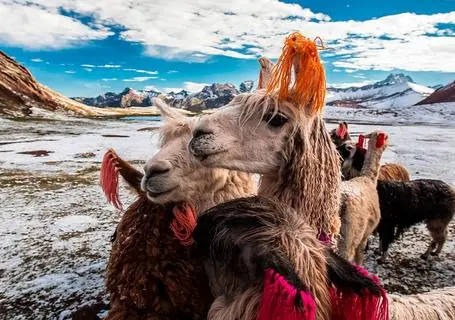
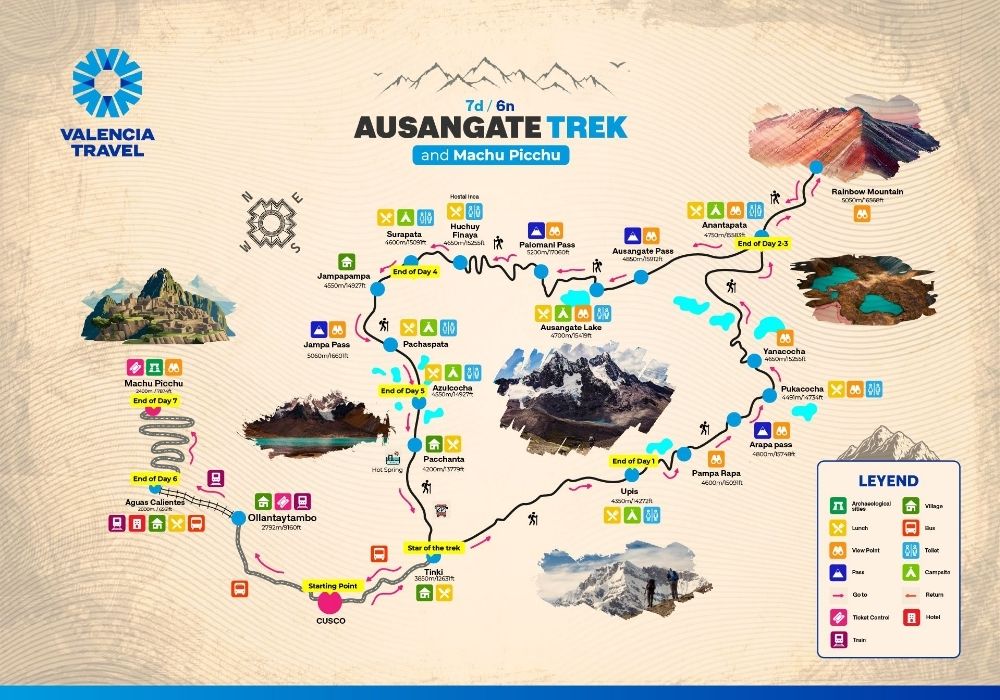

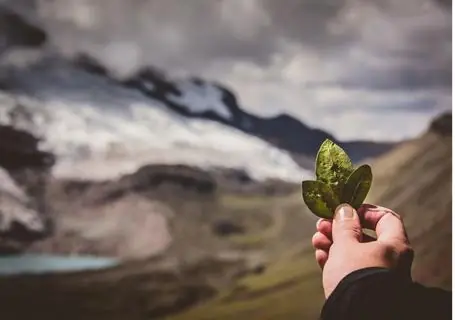
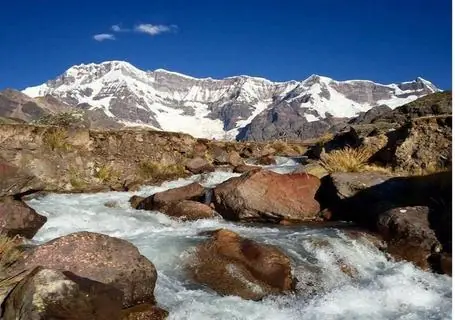
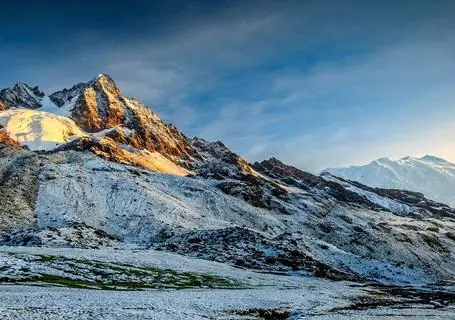
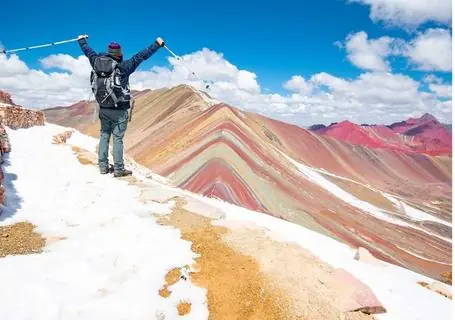 View All PhotosView All Photos
View All PhotosView All PhotosAdventure
Moderate - Demanding
Ausangate trek, Cusco, Vinicunca
Hiking / Trekking, Archaeological / Architecture, Thermal waters
cardinfo-price-per-adult
| cardinfo-text-5 | ||
| cardinfo-text-7 | Not included | |
| cardinfo-text-8 | cardinfo-not-included | |
cardinfo-text-10
h2-title-1
The Ausangate trek is considered one of the most challenging treks to Machu Picchu, in large part due to the high altitude along the route. But if you’re up for the challenge, the Ausangate trek is one of the most beautiful treks in Peru. It passes through unspoiled landscapes of snow-capped mountains, glaciers, and crystalline lakes for a start! Then there are the remote communities of the high Andean region. Here, people live in extreme conditions. Llama farming, alpaca herding, weaving and textiles, and farming anything that will grow at such a high altitude!
The Rainbow Mountain to Machu Picchu trek takes its name from Mount Ausangate, a huge massif with various peaks, the highest measuring 6,384 m (20,945 ft). Ausangate was an important mountain in Inca mythology and is still considered a sacred mountain apu, or mountain spirit. The Ausangate trek tour circles around the flanks of this spectacular mountain, through pristine landscapes where the only signs of human activity are hamlets and high mountain trails used by the local llama and alpaca herding communities. This trail is also far less traveled by other trekkers, making it ideal for people who really want to get away from it all and explore a remote but stunning part of Peru.
Our Ausangate Rainbow Mountain trek ends with a day exploring Machu Picchu. It also includes Vinicunca, the spectacular Rainbow Mountain or as locals callit, Vinicunca! Talk about visiting two of Peru´s most famous attractions (Rainbow Mountain and Machu Picchu). All on the same trekking adventure!
 Free Brochure
Free BrochureReady to explore? Download the brochure and start planning!
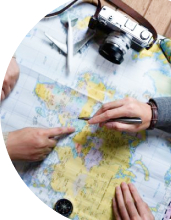
Your FREE travel expert is just a click away
Or Call us now! (888) 803 8004
h2-title-2
Day 1:Cusco - Tinki - Upis - Acclimatization Day
Our adventure begins when we pick you up from your hotel in Cusco at around 4:30 a.m. We then have a 3.5-hour drive through beautiful scenery, stopping occasionally to enjoy the views before eventually arriving at the village of Tinki. Just outside of Tinki, we will meet our local muleteers and horses, have a hearty breakfast and get ready to set off on our great adventure.
Our trek begins with a gradual uphill hike for about 5 hours, through a highland valley populated by herds of llamas and alpacas. The views here are already spectacular, with dramatic vistas of Ausangate in the distance. When we arrive at Upis we will enjoy a delicious lunch prepared by our chef. Upis is found at 4,350m/14,262ft. Here, we will spend the afternoon acclimatizing for the upcoming days where we will reach the high elevations found in The Ausangate range. You can spend the afternoon relaxing at the campsite as you acclimatize and take in the spectacular views all around us of the sacred mountain - Ausangate.
Hiking Time: 4 – 5 hours.
Hiking Distance: 7 km / 4.35 miles.
Highest Point: 4,350 m / 14, 272 ft.
Lowest Point: 3,850 m / 12,63 ft.
- Meals: All Included
- Tour Guide: Local Tour Guide: English/Spanish
- Transfer: Cusco - Tinki - Trailhead (3.5 hours approx).
- Horseman and Mules: To carry cooking and camping equipment.
- Entrance Fee: Ausangate Circuit
- Camp site: Upis (Tent per 2 people).
Day 2:Our Ausangate Adventure Continues
After breakfast, we’ll hike up for about 3 hours until we reach the first mountain pass, called Arapa, at 4,800 m / 15, 748 ft. This is our highest point on Day 2. From here it’s a 1.5-hour trek downhill until we reach our lunch spot at Pukacocha (4,491 m /14, 734 ft. This is a scenic spot near a beautiful lagoon and beneath Mount Ausangate. After lunch, we will continue on our hike to Anantapata, found at 4, 750 m / 15,583 ft. We begin on a trail with a series of ups and downs, passing some of the prettiest scenery yet. Here, blue and turquoise lagoons are dotted all around the foot of the Ausangate Massif, creating a magical landscape that wouldn’t look out of place in a Lord of the Rings movie. After we arrive at our campsite at Anantapata, our chef will prepare a well-earned dinner after this lengthy trekking day and we can relax for the evening under the star-filled skies of Ausangate.
Hiking Time: 7 – 8 hours.
Hiking Distance: 12 km / 7.46 miles.
Highest Point: 4,800 m / 15, 748 ft.
Lowest Point: 4,350 m / 14,272 ft.
- Meals: All Included
- Tour Guide: Local Tour Guide: English/Spanish
- Horseman and Mules: To carry cooking and camping equipment.
- Camp site: Anantapata (Tent per 2 people).
Day 3:Anantapata - Rainbow Mountain - Ausangate Qocha
Today we visit the beautiful Vinicunca, also known as the Rainbow Mountain. After an early breakfast, we’ll hike for about 6 hours total (return journey) until we reach the famous Rainbow Mountain, at about 5,050 m. Our early start means we’ll beat the large crowds that visit the mountain, and we should have it all to ourselves for about 45 minutes. This is enough time to enjoy the splendid colors of the striped landscape, the result of varied mineralogical compositions on the slopes and summits.
After Rainbow Mountain, we will return by the same trail to Anantapata, where we camped on Day 2. We’ll have lunch here also before we start trekking to our next campsite. We will continue hiking for two more hours to the next campsite, called Ausangate Qocha (4,700 m 15, 419 ft) where we’ll set up camp and have dinner.
Hiking Time: 8 – 9 hours.
Hiking Distance: 15 km / 9.32 miles
Highest Point: 5,050 m / 16,568 ft.
Lowest Point: 4,700 m / 15,419 ft.
- Meals: All Included
- Tour Guide: Local Tour Guide: English/Spanish
- Horseman and Mules: To carry cooking and camping equipment.
- Entrance Fee: Rainbow Mountain
- Camp site: Ausangate Qocha (Tent per 2 people).
Day 4:Ausangate Qocha to Jhampapampa
Today is the shortest day of trekking so far in terms of distance covered, but we will be trekking up to the highest point on our Ausangate adventure. After breakfast, we’ll begin trekking up to the Palomani mountain pass, which sits at 5,200 m (17,060 ft). above sea level – the highest pass on the whole trail. It’s a challenging hike, especially at this altitude, but we’ll take it slowly and you can stop for a breather whenever you want.
The views on the way up are amazing, but just wait until you reach the pass! All your effort will be rewarded with a spectacular sight as you reach the top and look over to the other side, where a pink lake lies shimmering among colorful mountains and large glaciers.
After enjoying this awe-inspiring view, we will walk down the other side of the pass until we reach a mountain valley called Huchuy Finaya. Here we’ll have lunch. Refreshed and reenergized, we’ll continue on in the afternoon, trekking for about two more hours until we reach our next campsite at Jhampapampa, at a comparatively comfortable 4,550 m /14,927 ft. above sea level. Here we’ll rest with a cup of coca tea, have dinner, and then have a well-earned sleep amid the mountains.
Hiking Time: 6 – 7 hours.
Hiking Distance: 10 km / 6.21 miles.
Highest Point: 5,200m / 17,060 ft.
Lowest Point: 4,550 m / 14, 927 ft.
- Meals: All Included
- Tour Guide: Local Tour Guide: English/Spanish
- Horseman and Mules: To carry cooking and camping equipment
- Camp site: Jhampapampa (Tent per 2 people).
Day 5:Jhampapampa to Azulcocha
After another great breakfast cooked by our chef, we will walk gradually up to the last mountain pass of our trek, the Jhampa pass, at 5,060 m (16,601 ft). From here we have amazing views of glaciated peaks right in front of us.
We’ll now start trekking gradually downhill for two hours, passing by more pretty lakes and keeping an eye out for alpacas and chinchillas. We will have lunch in Pachaspata before we continue on our way. We will hike for 2 hours more to our campsite in Azulcocha at (4,550 m / 14,927 ft. You will have the whole afternoon to relax and enjoy the scenery at your leisure, knowing that the hardest parts of our Ausangate trek are all behind us. Later we’ll have dinner and then hit the sack, on what is our last night of camping under the Andean night sky.
Hiking Time: 5 – 6 hours.
Hiking Distance: 8 km / 4.97 miles.
Highest Point: 5,060 m / 16,601 ft.
Lowest Point: 4,550 m / 14,927 ft.
- Meals: All Included
- Tour Guide: Local Tour Guide: Englsh/Spanish
- Horseman and Mules: To carry cooking and camping equipment
- Camp site: Azulcocha (Tent per 2 people).
Day 6:Azulcocha - Pacchanta - Aguas Calientes
Our morning begins with a hot cup of coca tea and another excellent breakfast, after which we set off on a 2.5-hour downhill hike to the town of Pacchanta, where the trail ends. Here we can soothe our muscles in the local hot springs and enjoy lunch, thinking back on our epic trekking adventure through the mountains. We’ll also say goodbye to our local muleteers, chef, and other trekking staff.
We now return to our private transport for the five-hour drive to Ollantaytambo in the Sacred Valley of the Incas. Once we arrive, we can explore this picturesque town, with its ancient cobblestone streets and colorful traditional market. In the evening we’ll have dinner in one of the local restaurants and celebrate the trip with a few well-deserved pisco sours!
Later, at around 7 p.m., we’ll take the train from Ollantaytambo to Aguas Calientes, the town that sits below Machu Picchu. Here we’ll check into your hotel (not Included). You’ll probably want a reasonably early night; as the next day we wake early to explore our final destination: the magnificent Machu Picchu citadel.
Hiking Time: 2 – 3 hours
Hiking Distance: 5 km / 3.11 miles.
Highest Point: 4,550 m / 14,927 ft.
Lowest Point: 2,000 m / 6,561 ft.
- Meals: All Included
- Tour Guide: Local Tour Guide: English/Spanish
- Horseman and Mules: To carry cooking and camping equipment.
- Transfer: Pacchanta - Ollantaytambo Train Station (4.5 hours approx).
- Train Ticket: Ollantaytambo - Aguas Calientes
Day 7:Machu Picchu in all its Glory (and Return to Cusco)
To best appreciate Machu Picchu, we’ll wake up early in the morning so we can get to the citadel in good time. You’ll have time for breakfast first, and then your guide will pick you up from the hotel at around 5:40 a.m. Then we will walk to the starting point of the bus, a trip of approximately 45 minutes in the direction of the citadel of Machu Picchu.
We’ll then pass through the gates to the Machu Picchu archaeological site. Here you’ll begin your guided walking tour with an experienced and highly knowledgeable guide. Our tour of Machu Picchu will last about two hours and will take you to all the most famous and spectacular parts of the extensive archaeological complex. These include the House of the Guardian, Intihuatana, Temple of the Sun, Sacred Plaza, and other key locations. (It will depend on the circuit that the Ministry of Culture determines).
And as we walk around, we’ll have spectacular views across the agricultural terraces of Machu Picchu and across to the surrounding mountains and plunging gorges.
Once we’ve finished our tour of Machu Picchu, we’ll take the bus back down to Aguas Calientes where you can relax and have lunch (not included) before we board the train back to Poroy and Cusco. Upon arrival at the station, our staff will be waiting for you to take you back to your hotel in Cusco, a quick trip of approximately 25 minutes, where you will be able to remember your incredible tour of one of the most famous and impressive attractions in the world.
- Meals: Not included
- Tour Guide: Local Tour Guide: English/Spanish
- Bus: Aguas Calientes - Machu Picchu - Aguas Calientes (20 minutes approx).
- Entrance Fee: Machu Picchu Citadel
- Train Ticket: Aguas Calientes - Ollantaytambo or Poroy
- Transfer: Ollantaytambo Train Station - Cusco Hotel
h2-title-3
Secure your spot on the trip now with our real-time availability information.
Act quickly—these spots sell out fast!
h2-title-4
whats-included-title
- Maximum group size is 16 people, the excursion leaves with at least 2 people
- Briefing for the tour one day before the trek at 19h00.
- Accommodation: Upis Camp (1 night), Anantapata camp (1night), Ausangate Qocha camp (1 night), Jhampapampa Camp (1 night), Azulcocha Camp (1 night).
- Transport: Private or shared
- Your Journeys Highlight Moment: Machupicchu archeological site, Ausangate snow-capped mountain, Rainbow mountain.
- Mules for the trek until the 5th day.
- Meals: 6 breakfast, 6 lunches, 6 dinners.
- Ausangate Mountain entrance fee.
- Rainbow Mountain entrance fee.
- Machupicchu entrance fee
- Train ticket from Ollantaytambo train station to Aguas Calientes.
- Round trip bus ticket from Aguas Calientes to Machu Picchu.
- First aid kit, if you are taking any medications, please bring your prescription with you.
- Professional Guided tour ENG .
- Snacks to be eaten throughout the trekking days.
- Duffle bag 7kg (to be carried by the mules).
- Emergency mule for riding if required along the Ausangate trek.
- An assistant guide for groups of more than 9 people.
- A chef trained for cooking on trekking routes and an assistant cook.
- Complete set of kitchen equipment and utensils.
- Dining room equipment which includes tables, chairs, and a dining tent.
- Water (you need to bring water for the first morning then we will provide you with drinking - previously boiled - water).
- 24/7 support and emergency line available throughout the itinerary.
whats-not-included-title
- Medical and emergency evacuation insurance.
- Trip cancellation insurance or any other travel insurance.
- Evacuation: in the event of a serious medical injury, we will coordinate with your travel insurance company to arrange evacuation.
- Any activity not described in What's Included.
- Meals and drinks not specified on the itinerary.
- Trekking equipment such as walking sticks, sleeping bags, or inflatable mattresses.
- Tips /Gratuities.
h2-title-5

specialist-box-title
Maria Diaz
specialist-box-phrase
top-tours-title
top-tours-info
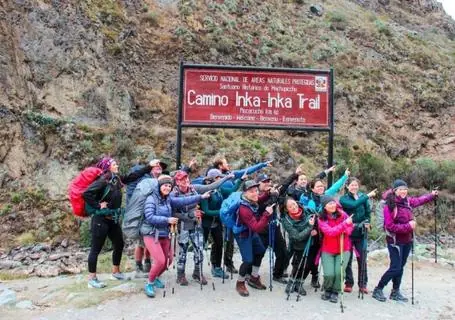
Trek Along the Inca Trail To Machu Picchu
7daysTrek Along The Inca Trail To Machu Picchu with Valencia Travel. We are a renowned Peruvian tour company offering trekking experiences throughout Peru.
card-type-tagAdventure
card-activity-tagModerate - Demanding
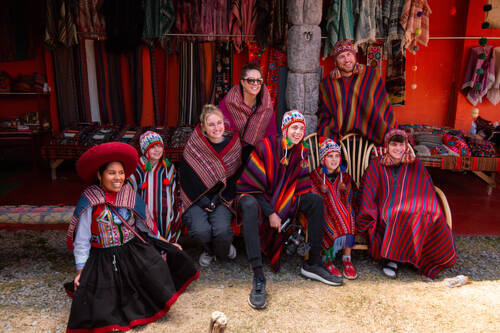
Classic Peru Trip
7daysValencia Travel's classic Peru trip is a bucket-list adventure. This 7 Day trip will take you on unforgettable experiences throughout the Peruvian heartland.
card-type-tagCultural, Gastronomy
card-activity-tagEasy
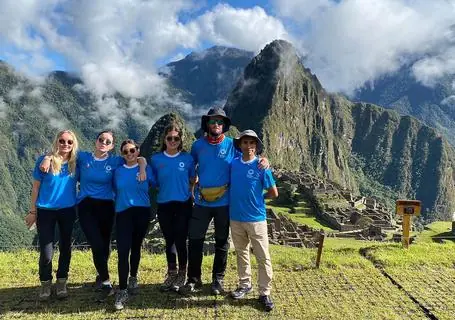
Classic Inca Trail
4daysThe Inca Trail trek to Machu Picchu is the ultimate bucket list hiking experience! Join us on this Classic 4 Day & 3 night Inca Trail Hike!
card-type-tagAdventure
card-activity-tagModerate - Demanding
asso-info-title
asso-info-description
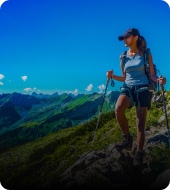 Aventure
Aventure
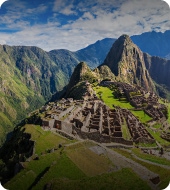 Cultural
Cultural
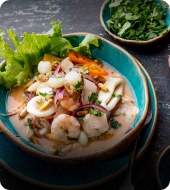 Gastronomy
Gastronomy
 Wellness
Wellness
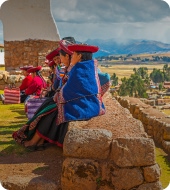 Local Living
Local Living
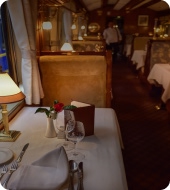 Luxury
Luxury
